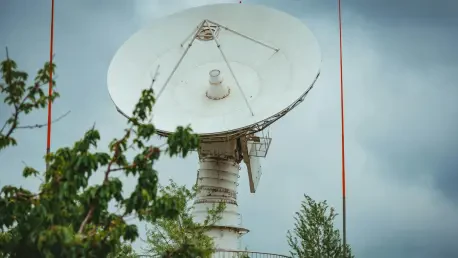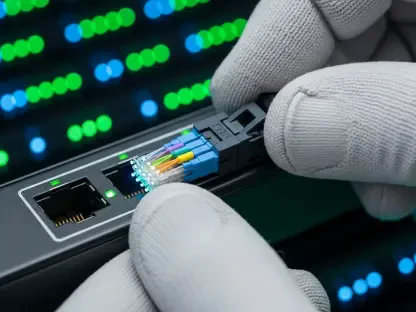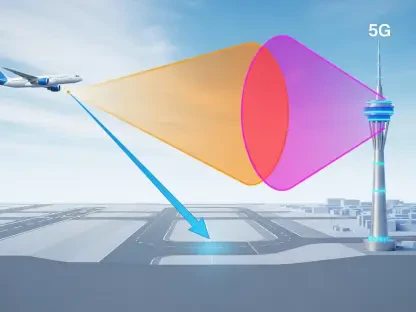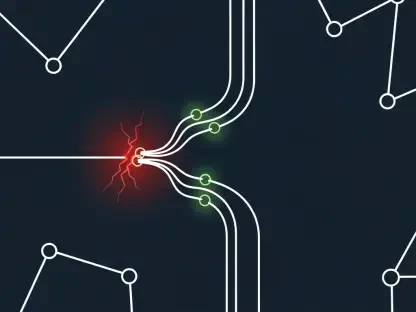Revolutionizing Remote IoT Solutions
In the rapidly evolving landscape of the Internet of Things (IoT), Viasat’s launch of IoT Nano marks a substantial shift, providing innovative solutions for industries in remote locations. Targeting agriculture, mining, transport, and utilities sectors, IoT Nano leverages satellite technology to offer considerable advantages in data management and connectivity where traditional networks falter. The implication is clear: a new era of satellite IoT solutions has emerged, reshaping how assets are monitored and managed in challenging environments.
Market Trends and Technological Insights
Exploring current market trends reveals a growing demand for efficient satellite IoT solutions driven by advancements like Viasat’s IoT Nano. This service builds upon Viasat’s earlier IsatData Pro (IDP) product, extending global reach through strategic redistribution channels. The integration of Orbcomm’s OGx technology, coupled with Viasat’s L-band satellite constellation, empowers IoT Nano to deliver lower power consumption and enhanced data message capabilities. The acquisition of Inmarsat further amplifies these offerings, positioning IoT Nano as a premier choice for industries seeking robust connectivity in isolated locations.
Data-Driven Projections and Competitive Analysis
Leveraging Advanced Satellite Technologies
IoT Nano stands out through its adoption of OGx technology, which is pivotal in advancing data transmission efficiency. The ability to accommodate larger messages with reduced power usage is proving transformational, offering industries the flexibility needed in remote operational contexts. A key comparison with cellular solutions such as NB-IoT suggests IoT Nano’s capability to thrive where massive, small-message deployments are insufficient, providing medium data rates suitable for varied applications.
Strategic Differentiation in IoT Market
Analyzing the competitive landscape reveals IoT Nano’s strategic edge over traditional non-terrestrial NB-IoT networks. Its larger message sizes and fully-acknowledged capabilities differentiate it significantly, as does its optimization for GEO satellite efficiency. IoT Nano caters to markets demanding data bandwidth for comprehensive asset tracking, solidifying its unique position among global IoT solutions.
Navigating Complexities in Remote Connectivity
IoT Nano’s introduction brings to light regional disparities and sector-specific demands within the satellite IoT arena. This service accentuates adaptability and flexibility, driving IoT integration across diverse markets. Dispelling misconceptions around satellite IoT, particularly regarding cost and accessibility barriers, is crucial. IoT Nano’s scalable, versatile offerings are paving the way for broader adoption, aided by increased understanding of these technological benefits.
Reflections and Strategic Considerations
The findings reflect the role of IoT Nano in fortifying Viasat’s presence in the satellite IoT space. This service aligns with the current needs of industries operating in remote terrains, offering reliable connectivity, enhanced data management, and increased operational efficiency. Strategically, businesses should consider adopting best practices to enhance IoT Nano’s capabilities, leveraging its technological advances for maximum impact. Collaborating through initiatives such as Viasat’s ELEVATE partner program can foster innovation and expand IoT functionality, keeping pace with the evolving connectivity landscape.
Viasat’s IoT Nano service represents a significant leap forward in satellite IoT technologies, offering unmatched flexibility, resilience, and scalability for enterprises in isolated locations. By harnessing these capabilities, industries can amplify their operational efficiencies and adopt a future-ready approach to connectivity. As the market continues to evolve, IoT Nano’s unique offerings clearly pave the way for an unprecedented wave of remote data integration and management, setting the stage for transformative industrial advancements.









